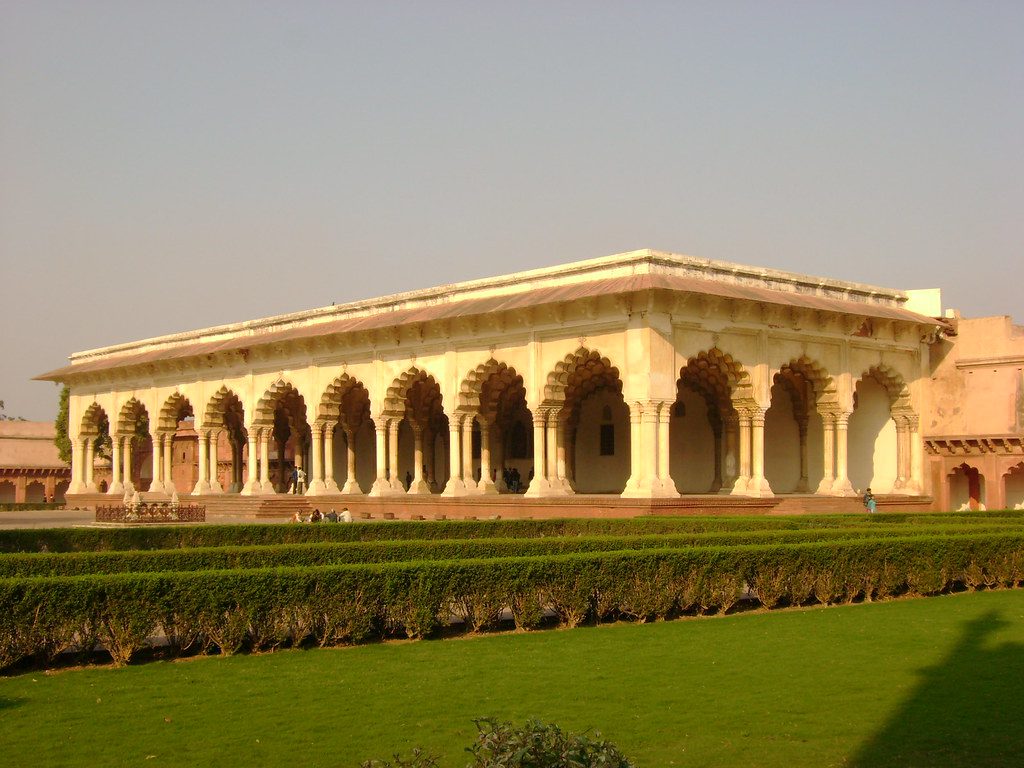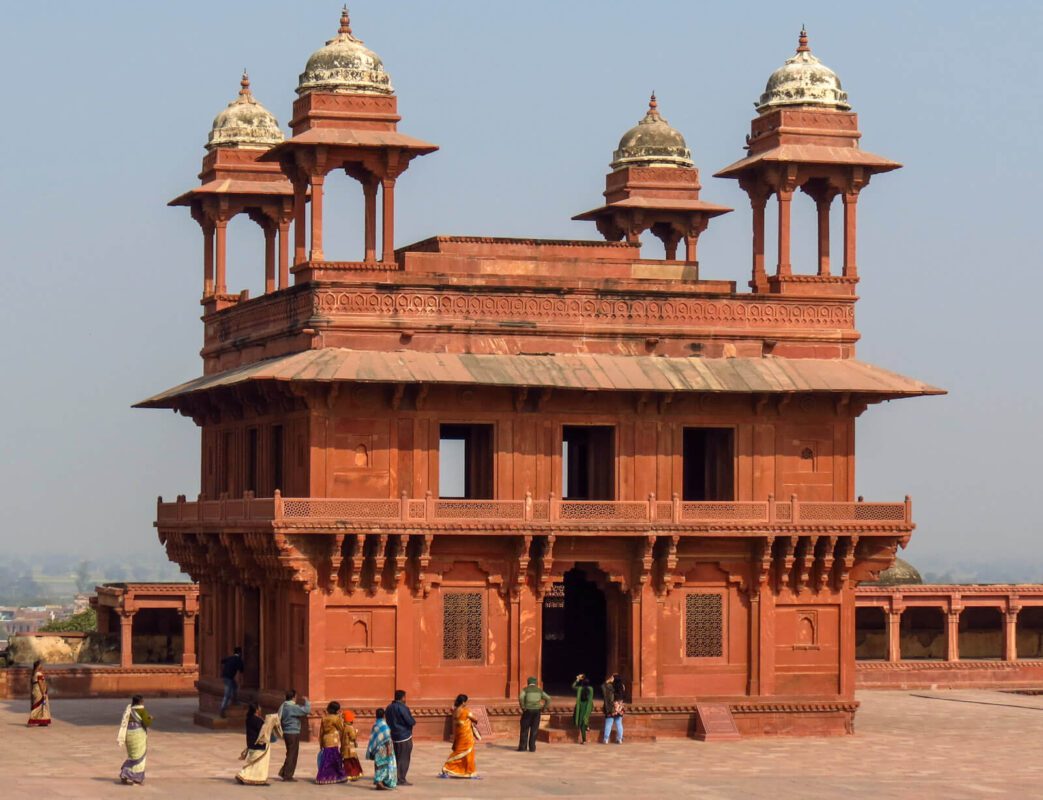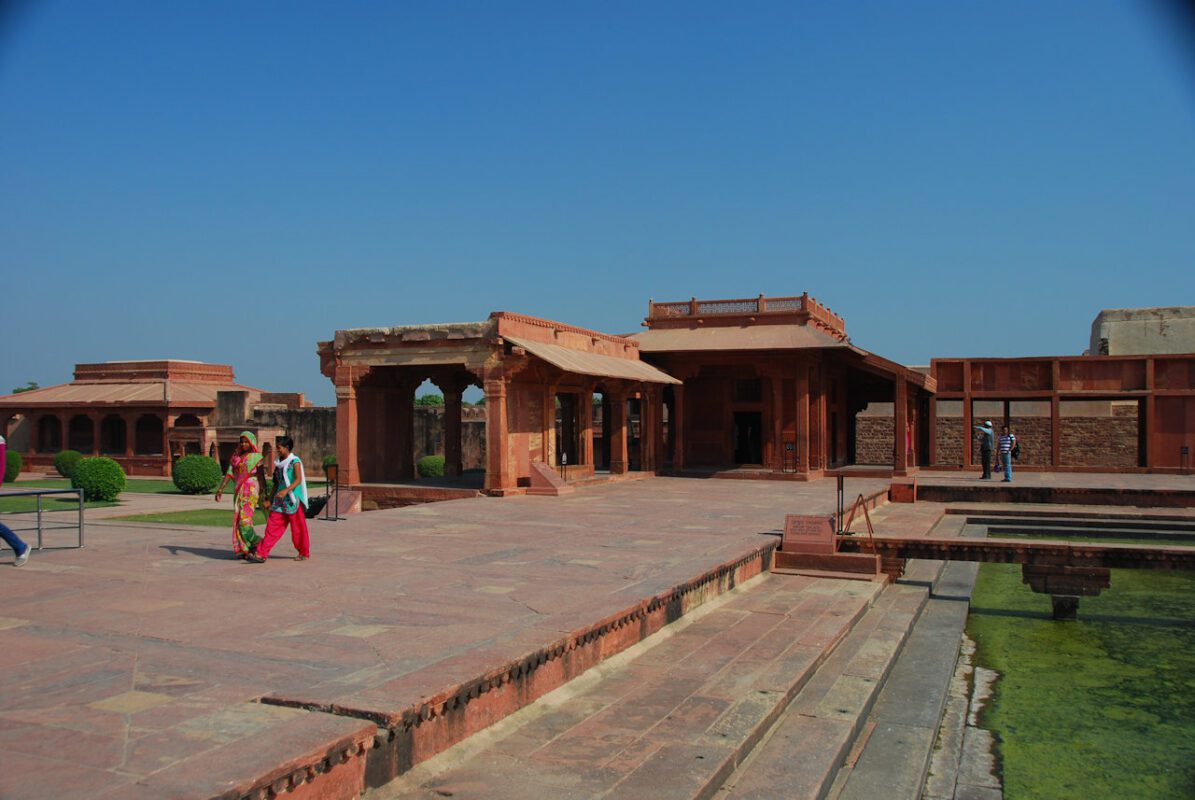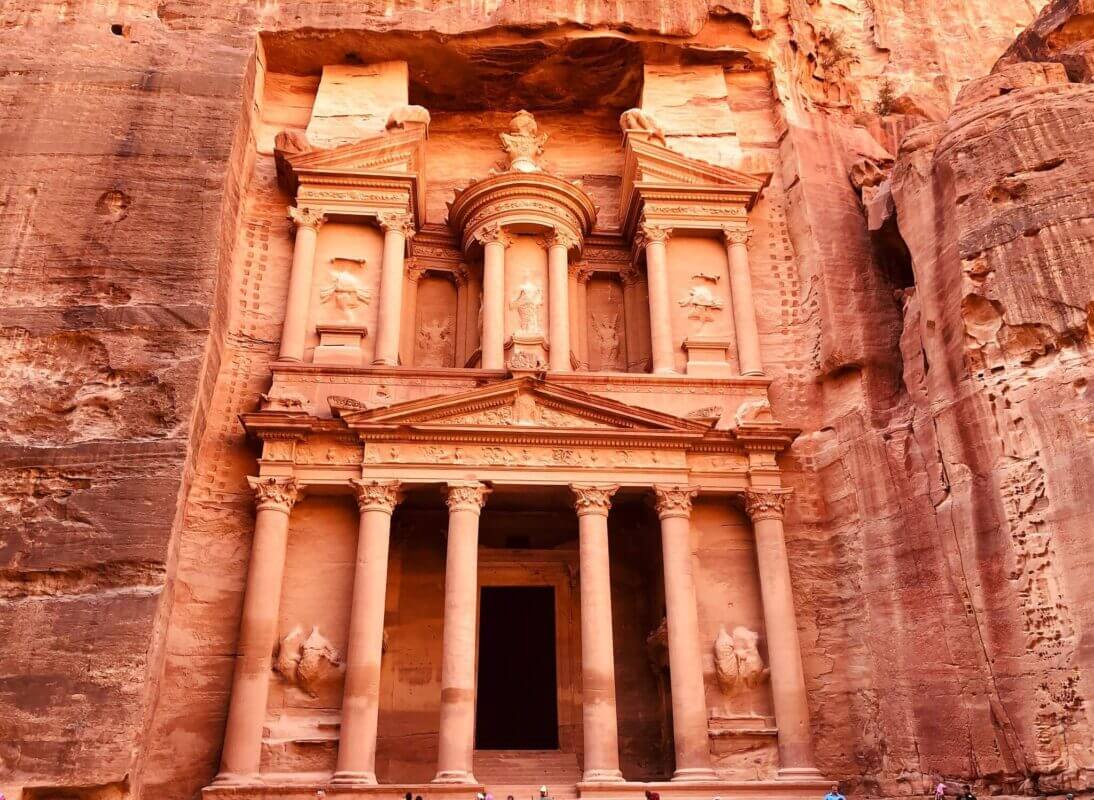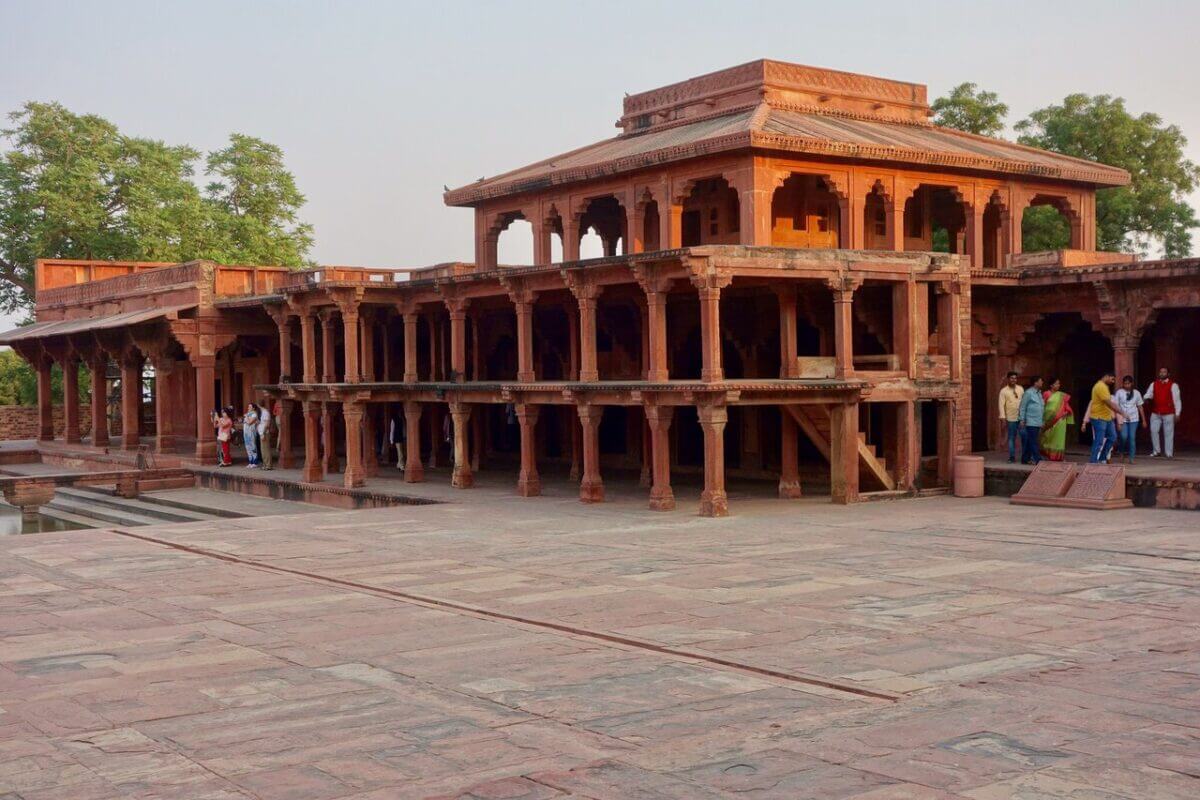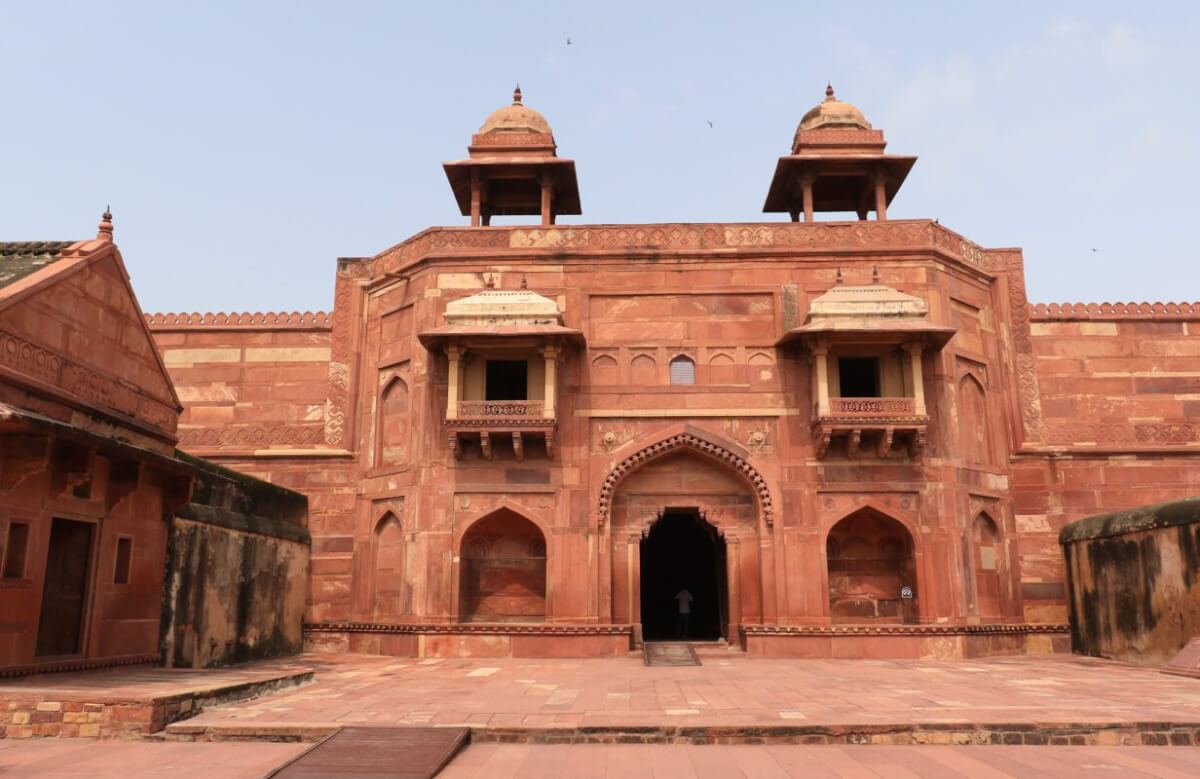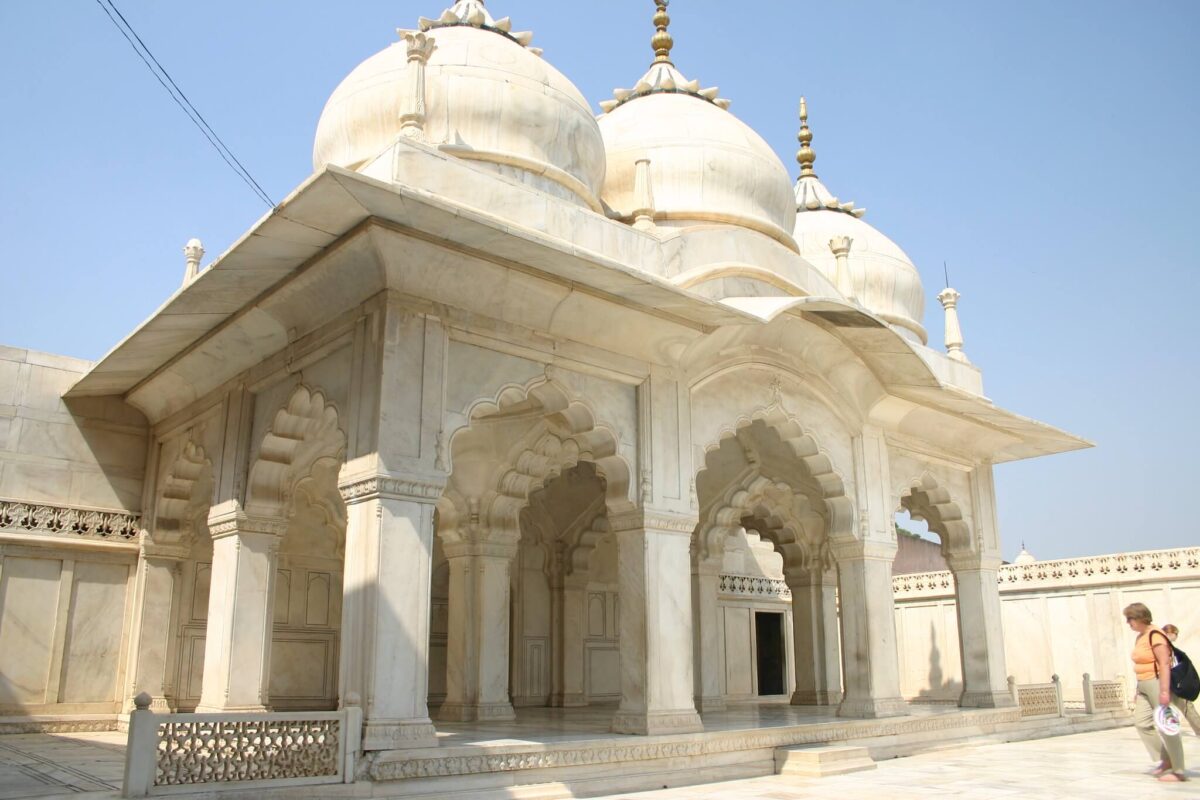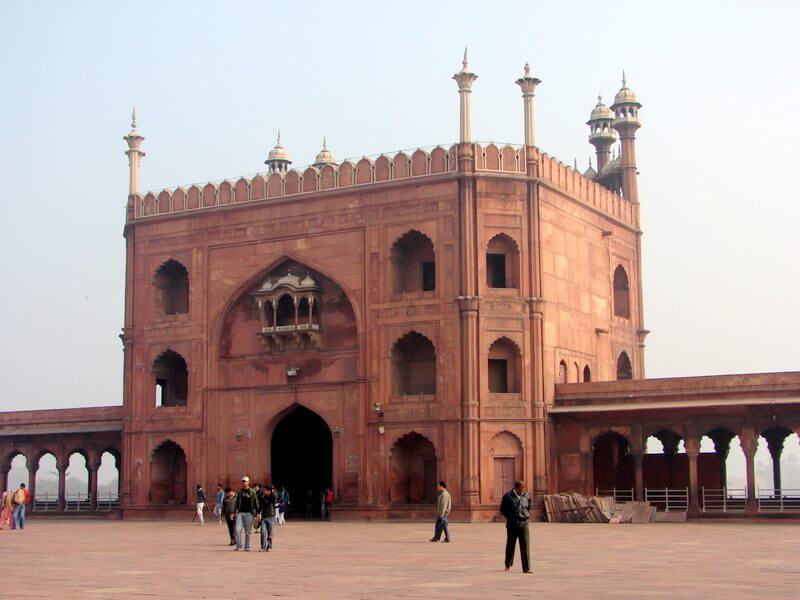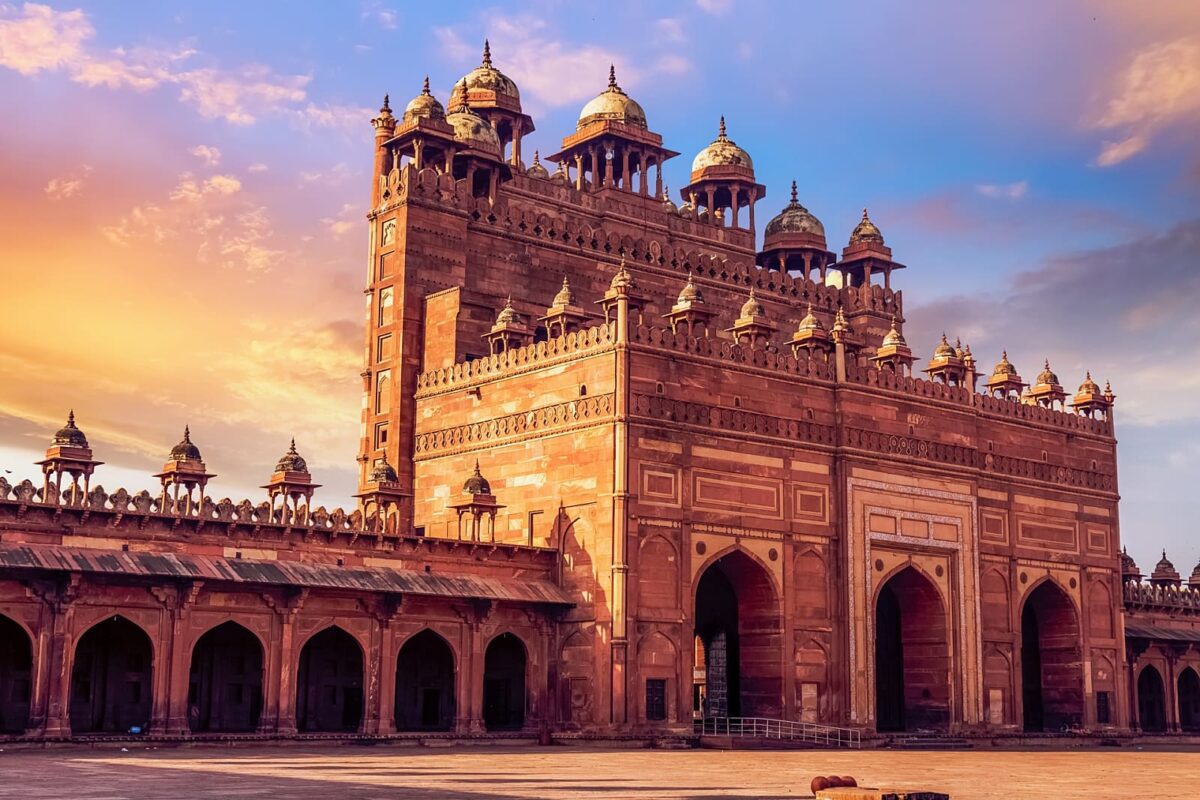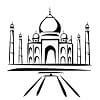- Home
- Holiday Ideas
-
-
- Choose Your Traveling Theme
-
- Adventure Tourism
-
- Cultural Tourism
-
- Tour Packages
-
-
- Packages by State
-
- Holidays by Interest
-
- Popular Tour Packages
-
- Fair And Festivals
-
- Ayurveda And Yoga
-
- Offers
-
- Destinations
-
Fatehpur Sikri
Fatehpur Sikri
37 kms from Agra is made a city predominantly in Red Sandstone and is named Fatehpur Sikri. This town was built by the Mughal Emperor, Akbar. He had planned this city as his capital but shortage of water compelled him to abandon the town . After this within 20 years, the capital of Mughals was moved to Lahore. Fatehpur Sikri was built during 1571 and 1585. Today this ghost city features a population of about 30,000. This abandoned city has held a considerable lot of the old structures, because of the endeavors of the Archeological division. Fatehpur Sikri is one among the best samples of Mughal architectural splendour at its height. Though the town is in ruins, it’s an area to go to if one involves Agra.But in real terms Fatehpur Sikri may be a place where one should spend a while . The sunset over the ruins is sight to cherish.Fatehpur Sikri is that the best example of the culmination of Hindu and Muslim architecture. Fatehpur Sikri Mosque is claimed to be a replica of the mosque in Mecca and has designs, derived from the Persian & Hindu architecture.
Diwan-I-Am
The excursion to the illustrious royal residence starts with Diwan-I-Am or the Hall Of Public Audience. This lobby was likewise utilised for festivities and open supplications. It’s cloisters on three sides of an oblong courtyard. To the west may be a pavilion with the Emperor’s throne. Beautiful jali screen on either sides separated the women attending the court.
Diwan-khana-I-khaas
To the proper is an apparently looking two storeyed building, with corner kiosks, referred to as diwan-khana-I-khaas or Hall of personal Audience. On entering it, one finds only one vaulted chamber. within the centre stands a profusely carved column supporting a collosal-bracketed capital. Four narrow causeways project from the centre and run to every corner of the chamber. it’s believed that Akbar’s throne occupied the circular space over the capital and therefore the corners were assigned to the four ministers.
Turkish Sultana’s House
To the left of the Pachisi Board is that the Turkish Sultana’s house. The house, as its area at the side of Anup Talao shows, was a structure for rest, joined to the pool. The geometrical pattern on the ceiling is like Central Asian carvings in wood.
The Treasury
To the left of the Diwan-I-Khaas is that the Treasury or Ankh Michauli, once believed to possess been used for enjoying the sport , comprising three rooms each protected by a narrow corridor which were manned by guards.
Daulat khana-I-khas
Located within the corner to the left is that the emperor’s private chamber. it’s two main rooms on the bottom floor. One housed Akbar’s library while the bigger room was his resting zone. On the primary floor is that the Khwabgah or the bed-chamber. it had been connected with the Turkish Sultana’s house, the Panch Mahal, Mariam’s House and therefore the Jodha Bai’s palace by corridors.
Palace of Jodha Bai
To the left of the Sunehra Makan is that the largest and therefore the most vital building within the royal palace, named after Akbar’s Rajput wife, Jodha Bai. This roomy castle was guaranteed of protection and security by high dividers and a 9 meter watched door toward the east. The architecture may be a blend of designs with Hindu columns and Muslim cupolas.
Hawa Mahal And Nagina Masjid
To the proper of Jodha Bai’s palace is Hawa Mahal, the Palace of Winds. This little screened breeze tower faces the nursery and is appended to the castle. The nursery is laid call at the Char Bagh style with straight dividers meeting at right edges and partitioned by shallow channels.
The Jami Masjid
One of the most important mosques in India, Jami Masjid was inbuilt 1571 AD. Inside, there’s a huge congregational coutyard. To the proper , at the corner, is that the Jammat Khana Hall and next ot this is often the tomb of the royal ladies. To the left of the Jami Masjid is that the Stone Cutters’ mosque, the oldest place of worship at Fateh Pur Sikri. it’s entered through the eastern entrance referred to as the Buland Darwaza.
Buland Darwaza
This gate are often approached from the surface by a 13-metre flight of steps which adds to its grandeur. The entryway raised in 1602 AD to remember Akbar’s triumph over Deccan is that the most elevated and most fabulous passage in India and positions among the most significant inside the world.
How to get there
By Air
Agra’s Kheria Airport is a seasonal airport which is mostly only connected to New Delhi. Flights do not always ply on this route. Other ways to reach Agra include flying into New Delhi which is about 210 km away from Agra. The other cities one can fly into include Gwalior, Jaipur, and Lucknow.
Rail
Agra is connected via regular railway services to many big cities like New Delhi, Mumbai, Allahabad, and Jaipur. The train stations here include Agra Fort, Agra Cantt., Agra City, Raja ki Mandi, Idgah, and Yamuna Bridge.
By Road
Agra is connected via regular bus services to New Delhi (about 210 km away), Jaipur (about 238 km away), Gwalior (about 120 km away), Lucknow (about 336 km away), and Kanpur (about 276 km away). These could be operated by private companies, the UPSRTC or other state road transport corporations.
WANT TO RENT A CAR IN INDIA ?
Choose Your Traveling Theme



